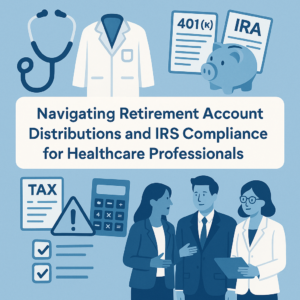In today’s financial landscape, finding ways to maximize your savings is crucial. Understanding tools like high-yield savings accounts can help you achieve financial security and reach long-term goals. In this blog post, we will explore the benefits of high-yield savings accounts, compare them with traditional savings methods such as Certificate of Deposits (CDs), and offer practical suggestions on integrating these accounts into your financial strategy.
Understanding High-Yield Savings Accounts
High-yield savings accounts are bank accounts that offer much higher interest rates compared to regular savings accounts. These accounts are generally offered by online banks or credit unions, which can afford to offer higher rates due to their lower overhead costs.
Key Characteristics:
- Higher Interest Rates: Often several times the interest offered by traditional savings accounts.
- FDIC Insured: Like standard savings accounts, they are insured by the Federal Deposit Insurance Corporation (FDIC) up to $250,000, offering security.
- Liquidity: Generally, you can withdraw money without penalty, though there may be limits on the number of withdrawals per month.
- Online Access: Most high-yield accounts are managed online, which may be advantageous for those comfortable with digital banking.
Benefits of High-Yield Savings Accounts
Higher Yields
One of the most compelling benefits of high-yield savings accounts is their potential to offer significantly higher returns compared to traditional savings accounts. Consider this scenario: If you deposit $5,000 in a traditional savings account with a 0.1% APY, you’ll earn around $5 in interest over a year. In a high-yield savings account with a 5.1% APY, that same $5,000 would earn you approximately $255 in interest over the same period. This substantial difference underscores why high-yield savings accounts are essential for maximizing savings.
Liquidity and Accessibility
High-yield savings accounts offer the convenience of accessing your funds without significant penalties. This liquidity is crucial for healthcare workers who might need access to their savings for emergencies, professional expenses, or investment opportunities.
For example, unlike a Certificate of Deposit, which require a commitment for a specific term (usually 3, 6, 12, 24, or 36 months), money in high-yield savings accounts can typically be accessed anytime, often within one or two business days.
Safety and Security
High-yield savings accounts are just as secure as regular savings accounts because they are FDIC insured up to $250,000 per depositor, per insured bank. This insurance assures you that your money is safe even if the bank fails.
Factors to Consider
- Interest Rates: Ensure you understand the current rate and any conditions. Rates can fluctuate, and some banks offer promotional interest rates that might decrease after an introductory period.
- Fees: Some high-yield savings accounts come with monthly maintenance fees. Look for accounts with minimal or no fees.
- Access: Confirm the ease of accessing your money and any limitations on withdrawals or transfers.
Potential Pitfalls and Overcoming Them
- Interest Rate Variability: Monitor the interest rates periodically. If you notice significant drops, consider shifting your funds to a bank offering better rates.
- Fees and Conditions: Carefully review the terms and conditions before opening an account. Avoid accounts with hidden fees.
- Withdrawal Restrictions: Some accounts may limit the number of withdrawals per month. Plan your withdrawals to avoid penalties.
Choosing the Right High-Yield Savings Account
With numerous high-yield savings accounts available, selecting the right one could seem daunting. Here’s what to look for:
- Interest Rates: Compare APYs across different institutions. An APY of 5.1% is excellent, but ensure it’s not a temporary rate that will revert after a few months.
- Fees: Opt for accounts that have no monthly maintenance fees or low fees that won’t erode your earnings.
- Minimum Deposit Requirements: Some accounts require a minimum deposit to open or maintain the high yield rate. Ensure this aligns with your savings.
- Accessibility: Check how easily you can access your money. This includes online banking options and the ability to link to your primary checking account for easy transfers.
- Customer Service: Read reviews or ask for recommendations regarding the bank’s customer service. Efficient service can save you time and resolve issues swiftly.
Maximizing your savings is an essential part of achieving financial stability and reaching life goals, especially for young healthcare workers. High-yield savings accounts present a valuable opportunity to increase your savings’ growth while maintaining flexibility and security.
By thoroughly understanding how high-yield savings accounts work, comparing them to other traditional savings methods like CDs, and making informed decisions, you can significantly enhance your financial well-being.
This blog post is designed to provide general information for educational purposes only. It does not constitute financial advice. For personalized advice tailored to your specific circumstances, please consult a qualified financial advisor. Interest rates and account terms mentioned are illustrative and subject to change.







